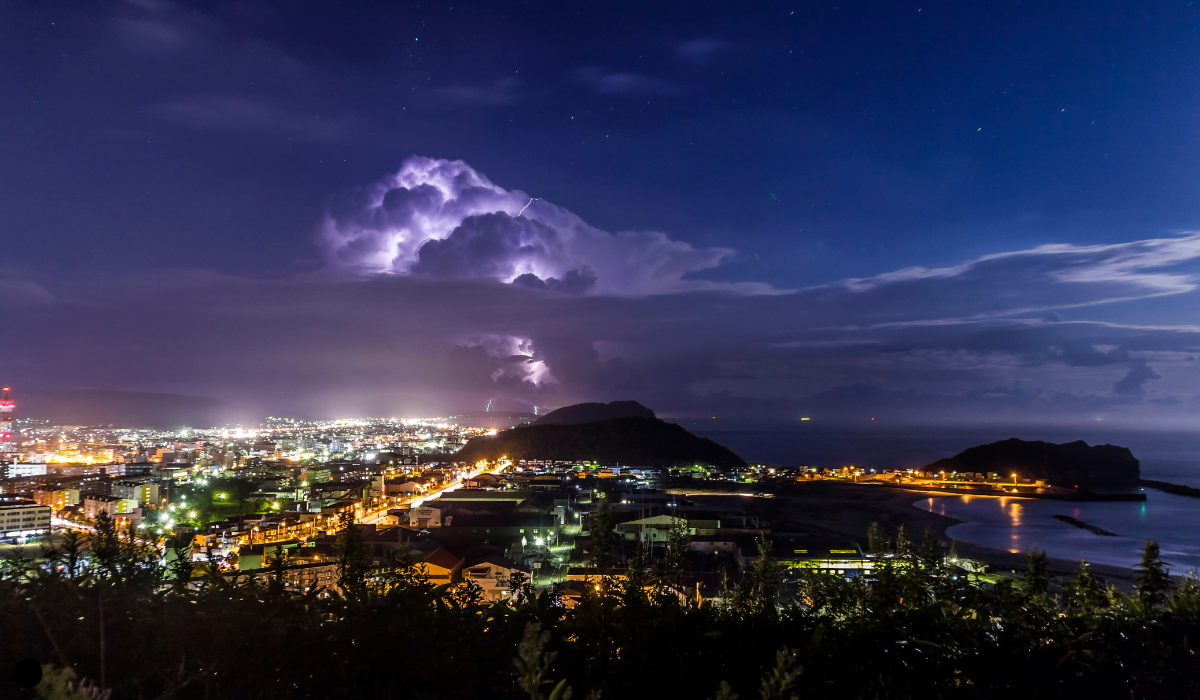Welcome to June, when rainy and windy seasons kick in and Mother Nature decides to turn up the drama. This means prepping for a weather roller coaster lasting until October for private jet pilots and crew. These deviations from your planned route can stretch over a hundred nautical miles over the South China Sea airspace, affecting countries like Singapore, Philippines, Indonesia, Taiwan, Thailand, etc.
What Are Large Scale Weather Diversions (LSWDs)?
Large Scale Weather Deviation Procedures (LSWDs) are specific protocols implemented by the Air Traffic Control (ATC) to manage substantial weather-induced route deviations. These procedures are essential during the rainfall season, which can bring severe weather conditions and complicate air traffic management. By standardizing deviations, LSWDs help maintain order in congested airspace and ensure safety.
During the wet season, these flight support procedures keep the skies organized and safe, even when the weather is determined to test everyone’s patience.
Forecast: Wet and Wild
The 2024 season promises to be particularly spicy. Thanks to a wild fluctuation of the Earth’s temperature, expect up to ninety percent of the annual rainfall to drench us in just a few months. This translates to widespread and intense weather systems, necessitating frequent and significant route deviations.
The airspace, filled with adjacent Flight Information Regions (FIRs) and some of the busiest corridors in the world, is about to get a lot more crowded. Routes like WSSS (Singapore) to RJTT (Tokyo) will feel the pinch. The need for significant lateral deviations will often exceed the safe distance between airways, making ATC calls truly important under trip support. This is why we need LSWDs.
How LSWDs Work
LSWDs facilitate the orderly flow of traffic through designated routes with specific altitude restrictions based on flight direction. This approach makes life easier for the many Air Traffic Services (ATS) sectors.
From a Singapore ACC record in 2022 for FLAS during LSWDs, the following list indicates which flight levels are allocated to each ATS route and direction of flight under LSWD conditions:
- FLA 400: Assigned to L642 (SW), N892 (SW), and M767 (SW)
- FLA 390: Assigned to M771 (NE), L625 (NE), and N884 (NE)
- FLA 380: None
- FLA 370: None
- FLA 360: Assigned to L642 (SW), N892 (SW), M767 (SW)
- FLA 350: Assigned to M771 (NE), L625 (NE), and N884 (NE)
- FLA 340: None
- FLA 330: None
- FLA 320: Assigned to L642 (SW), N892 (SW), and M767 (SW)
- FLA 310: Assigned to M771 (NE), L625 (NE), and N884 (NE)
- FLA 300: No assignments
- FLA 290: No assignments
However, for business jet operations, it can mean fewer chances to cruise at higher flight levels than 400. Controllers have to ensure the next sector can handle the traffic flow, which often means keeping everyone at more crowded, lower levels.
Fuel and Operations Flight Support
To navigate the challenges of LSWDs during this bad weather season, pilots and crew need to plan their fuel and operations proactively. Plan to carry at least thirty extra minutes of fuel. Flow control measures and crossing time restrictions are common during the monsoon season, potentially leading to less efficient mach numbers and delays in start-up clearances. So, add some buffer time and fuel to keep things running smoothly. For more trip support tips, contact us.
Flight Support for Bad Weather
The wet season demands a game plan and a solid grasp of LSWDs. By anticipating weather challenges and prepping accordingly, pilots and crew can keep things safe and efficient. Informing passengers about potential turbulence and preparing for the unexpected are essential parts of top-tier flight support.
Icarus Jet provides consistent and prompt trip support services for private jet pilots & crew around the globe. To inquire more, email fltops@icarusjet.com.




